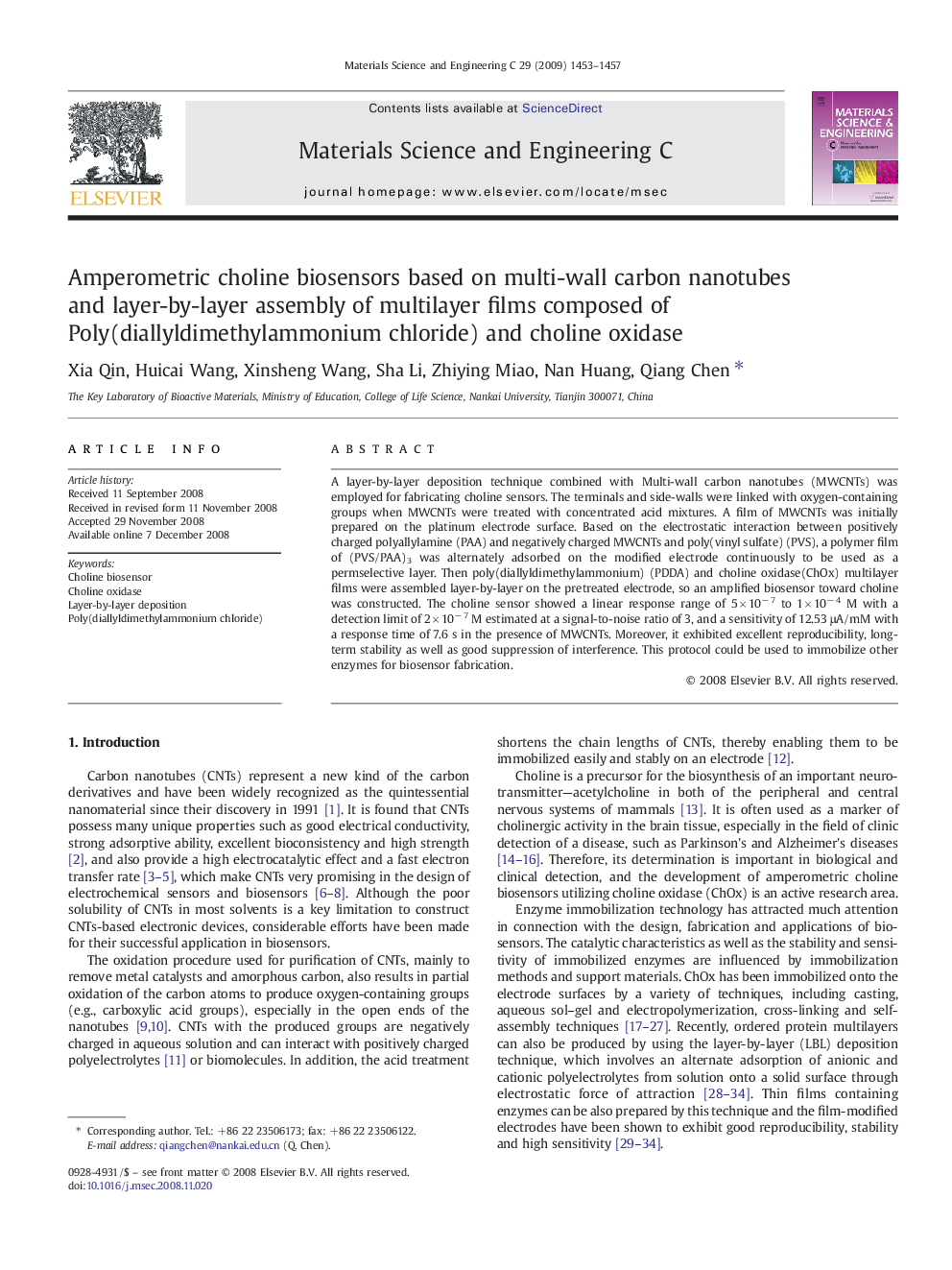| Article ID | Journal | Published Year | Pages | File Type |
|---|---|---|---|---|
| 1430937 | Materials Science and Engineering: C | 2009 | 5 Pages |
A layer-by-layer deposition technique combined with Multi-wall carbon nanotubes (MWCNTs) was employed for fabricating choline sensors. The terminals and side-walls were linked with oxygen-containing groups when MWCNTs were treated with concentrated acid mixtures. A film of MWCNTs was initially prepared on the platinum electrode surface. Based on the electrostatic interaction between positively charged polyallylamine (PAA) and negatively charged MWCNTs and poly(vinyl sulfate) (PVS), a polymer film of (PVS/PAA)3 was alternately adsorbed on the modified electrode continuously to be used as a permselective layer. Then poly(diallyldimethylammonium) (PDDA) and choline oxidase(ChOx) multilayer films were assembled layer-by-layer on the pretreated electrode, so an amplified biosensor toward choline was constructed. The choline sensor showed a linear response range of 5 × 10− 7 to 1 × 10− 4 M with a detection limit of 2 × 10− 7 M estimated at a signal-to-noise ratio of 3, and a sensitivity of 12.53 μA/mM with a response time of 7.6 s in the presence of MWCNTs. Moreover, it exhibited excellent reproducibility, long-term stability as well as good suppression of interference. This protocol could be used to immobilize other enzymes for biosensor fabrication.
